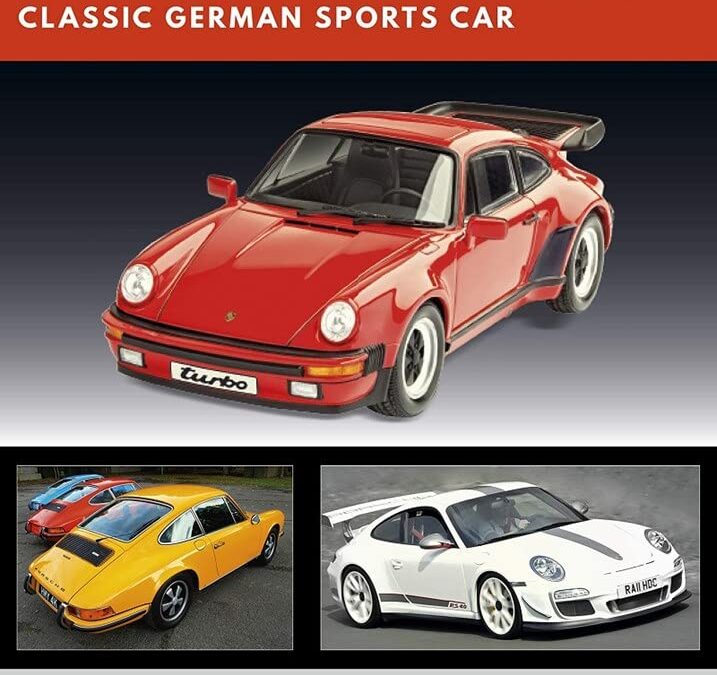
The aim of this innovative series is to provide model makers and car enthusiasts with a new standard of primarily visual reference of both full-size cars and their scale models.
The aim of this innovative series is to provide model makers and car enthusiasts with a new standard of primarily visual reference of both full-size cars and their scale models. Each book contains detailed technical information imparted through drawings and photographs while the meticulously researched full-color profiles provides a complete reference for paint schemes and markings. In addition, every volume of the CarCraft series features summaries of design histories and operational careers, and reviews of available kits.
Recognized as one of the most important sports cars in the history of the automobile, Porsche’s 911 represents a vital story in the annals of the design and driving of the motor car. This new book delivers an innovative format to the car enthusiast by covering the engineering, design, and modeling of Porsche’s 911 series.
A true icon, 911 is the designer legend – and a driving tool par excellence: the 911 stemmed from the Porsche 356 yet created a new era and a new international definition of style amid a global motor sport record of success across race and rally events
Here in CarCraft title Number Two, experienced automotive writer, industrial designer and Porsche enthusiast Lance Cole pays tribute to the car in a detailed yet engaging commentary. New photography, the design story, and full coverage of the modeling options in synthetic materials and die cast metals, create a narrative of vital interest.
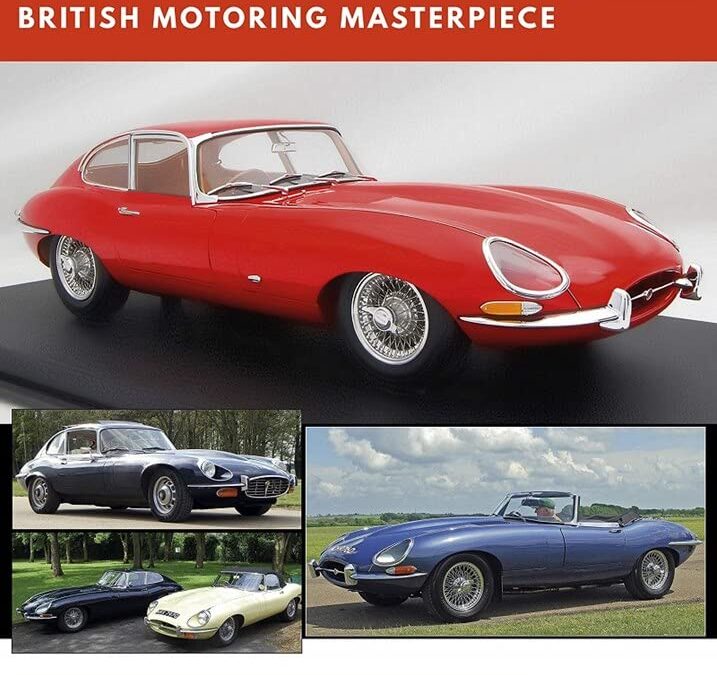
The third book in the new CarCraft series, Jaguar E-Type, frames the legend of what many call the world’s most beautiful car design.
The aim of this innovative series is to provide model makers and car enthusiasts with a new standard of primarily visual reference of both full-size cars and their scale models. Each book contains detailed technical information imparted through drawings and photographs while the meticulously researched full-color profiles provides a complete reference for paint schemes and markings. In addition, every volume of the CarCraft series features summaries of design histories and operational careers, and reviews of available kits.
The third book in the new CarCraft series, Jaguar E-Type, frames the legend of what many call the world’s most beautiful car design. Sir William Lyons and Malcolm Sayer carved automotive history with this car across its 1960s-1970s incarnations from roadster to coupé amid the fitting of Straight-Six, to V12 engines.
With its new definition of sculptural styling, performance, handling and innovative style, the E-Type or XKE series in the USA, created a car of global impact that remains a great classic of all time.
Here, experienced automotive writer, and industrial designer, Lance Cole pays tribute to the car in a detailed yet engaging commentary. New photography, the design story, and full coverage of the modeling options in synthetic materials and die cast metals, create a narrative of vital interest.
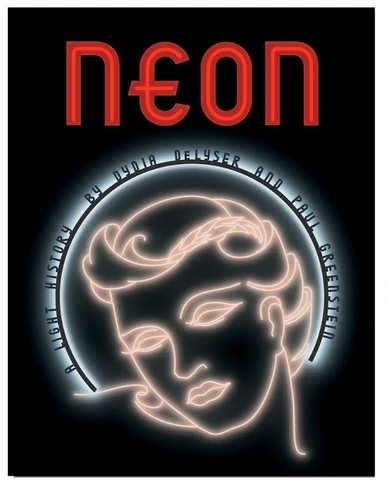
SIGNED
Since the late nineteenth century neon signs have inspired devotion and derision, drawing people to them and transforming the American landscape in the process. In Neon: A Light History Dydia DeLyser and Paul Greenstein unite the approaches of scholar and signmaker in the first book to detail neon’s rich history and geography from the inside. Lavishly illustrated and invitingly designed, this short book’s compellingly written expert analysis dispels long-held myths and misunderstandings about the inventors and technologies, the art and commerce, and the cities and communities that have made neon signs such iconic parts of the American landscape.
Revealing neon signs as active agents in sweeping cultural, economic, and political changes nationwide, DeLyser and Greenstein introduce readers to inventors and “tube benders,” business owners and customers, politicians and passersby, sign detractors and sign afficionados, architects and restoration specialists—a compelling cast of characters, many of whom, they show, continue to keep neon vibrant today. Taking readers inside the signs themselves, the authors show how each sign, whether historic or contemporary, is made by skilled hands—today just as they were over one hundred years ago.
Drawing from over a decade of in-depth archival and ethnographic research as well as more than four decades of experience in the sign industry, DeLyser and Greenstein use Los Angeles—not New York or Las Vegas—as focal point, showing how neon signs have catalyzed urban change, and how they continue to hold appeal for our changing communities—developing with the automobile and car-and-consumer culture in the twentieth century, expanding from cities to towns, and along highways to remote roadside outposts. From the earliest luminous tubing in the 1890s to the artistic creations of today, from community-funded restorations of historic signs to ordinary-seeming business signs that have become community icons, DeLyser and Greenstein show how, just as neon signs lit our past, they can now light our shared future.
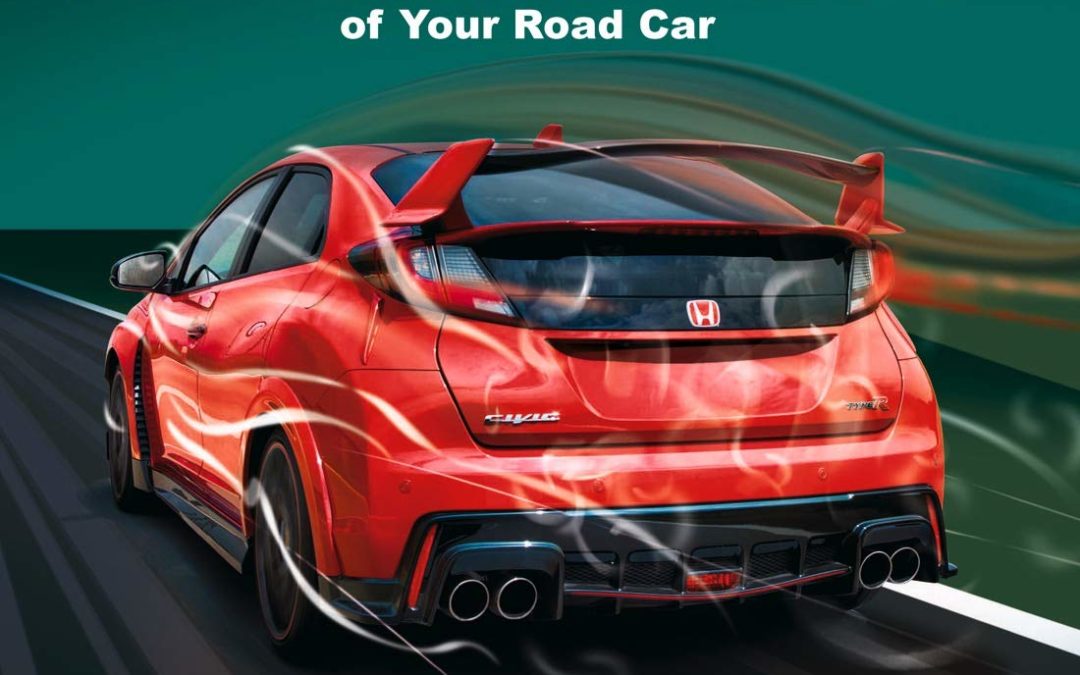
Modifying the Aerodynamics of Your Road Car is a unique handbook that assumes no starting knowledge of vehicle aerodynamics. It begins with simple ideas and finishes with sophisticated and effective aerodynamic modifications that work.
Three major chapters cover on-road testing techniques that give you all the information you need to decide what modifications you should make – and, after you’ve made them, how well they work. Low-cost techniques allow you to visualize the patterns of airflow over your car so that you can actually see the problem areas that need improvement. Uniquely, you’re also shown how to measure aerodynamic pressures, so you can determine which body surfaces are creating lift, drag and downforce. Want to work out where a wing should be placed? On-road testing to find that out is covered as well. The book also shows you how to measure downforce to see if that wing is actually working!
If you wish to reduce drag, more than ten different areas are covered. Reducing frontal area, lowering cooling system drag, optimizing vehicle ride height and rake, reducing the strength of the wake, achieving clean airflow separation and optimizing wheel designs are all covered using the latest research findings. And if you’re a performance driver, there’s a major chapter devoted to reducing lift and improving stability. This chapter includes the design and development of undertrays and diffusers, wings and spoilers. The example car developed measurable downforce when fitted with an undertray and rear diffuser, something that transformed its on-road handling.
The author has been writing about the aerodynamics of road cars for more than 25 years. He is also an experienced and proficient car modifier who has performed numerous aerodynamic modifications and upgrades to his own cars. The book’s technical consultant, RH Barnard, is an acknowledged world leading automotive aerodynamicist.
If you want a practical, hands-on guide that demystifies and explains car aerodynamics, and shows you how to make effective aerodynamic modifications to your car, this book is for you.
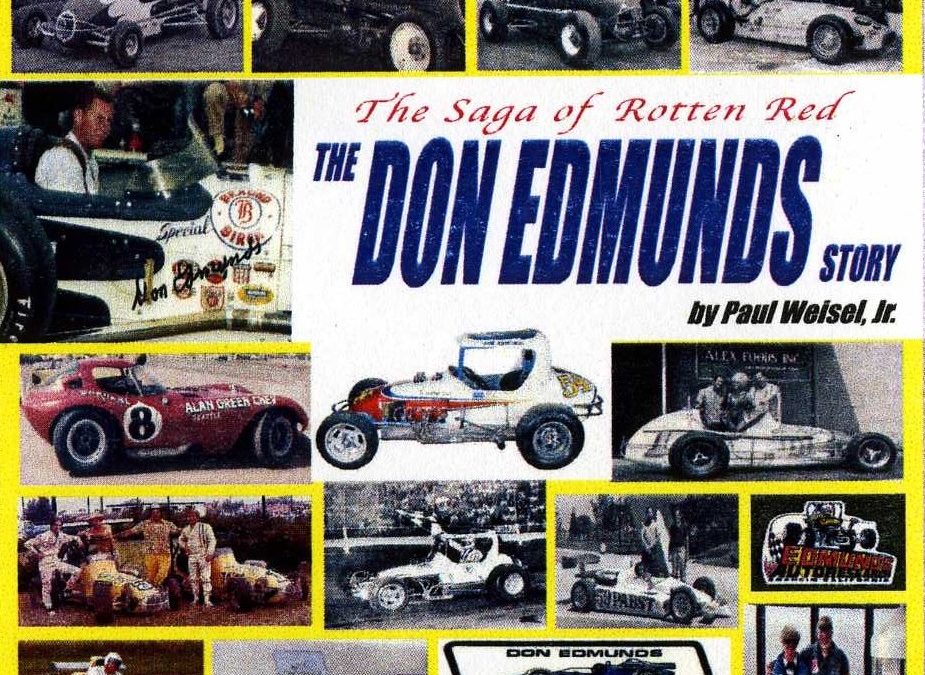
Many people remember Don Edmunds as the premier builder of open wheel race cars during the 1960s, 1970s, and into the early 1980s, but the Don Edmunds story isn’t just about iconic midgets and sprint cars. Don was a true innovator, whose cars combined art and performance and were always at the forefront of open cockpit safety and design, but few readers realize Don Edmunds touched so many parts of the racing world and beyond. Author, Paul Weisel, Jr., has partnered with Don to tell the Edmunds story in a new 182-page book, complete with more than 200 photos, titled, ‘The Saga of Rotten Red – The Don Edmunds Story’.
From his childhood in Anaheim, CA, his teenage years as a part of the southern California roadster scene, including appearances at El Mirage and Bonneville, his first oval track exposure racing jalopies with the California Jalopy Assn., to his graduation to the midgets of the United Racing Assn., the book chronicles Edmunds’ journey toward his greatest racing triumph, qualifying for the 1957 Indianapolis ‘500’ and subsequently being named ‘Rookie of the Year’ at Indy. Along the way Don learned the ropes from car owner, Doug Caruthers, paid attention to tips by drivers, Billy Cantrell, Edgar Elder, and others, worked with Eddie Kuzma, fabricating race cars for Indy and the championship trail, and had his moniker of ‘Red’ transformed forever to ‘Rotten Red’, a tag he has always embraced. Even today, Don signs all his e-mails with ‘RR’. Don types the letters with a grin and all his friends smile when they read to the end of the message.
After Indianapolis 1959 Don retired from driving championship cars and returned to Anaheim to enjoy married life and to pursue his plans to eventually open his own race car shop. Stints with Bill Devin, Bill Stroppe, and Bill Thomas culminated with Don’s design and fabrication of the prototype of the Cheetah sports car and gave Don the practical experience he needed to open Don Edmunds’ Autoresearch in 1964.
Three separate shots at Indianapolis as a car builder and literally hundreds of midgets, sprint cars, supermodifieds, and super vees later, Don Edmunds replaced Frank Kurtis as the country’s most prolific designer and builder of open wheel race cars. Don Edmunds was on the cutting edge of open wheel race car design and later enjoyed a superb career driving supermodifieds, including a junket to compete with cars of his own design in South Africa. In 1991, Don Edmunds was inducted into the National Sprint Car Hall of Fame and in 1994, the National Midget Hall of Fame, two awards he holds in the highest regard.
Away from the track Autoresearch designed and built Evel Knievel’s X-1 Skycycle, the prototype vehicle the stuntman would use to jump the Snake River Canyon in Idaho. Don also became involved in the restoration of several significant 1930-era race cars and used his ‘retirement’ to produce dozens of stunning scale model race cars. Author Paul Weisel takes the reader on all of Edmunds’ adventures and provides insight into the thought process of one of the true ‘dreamers of the day’.
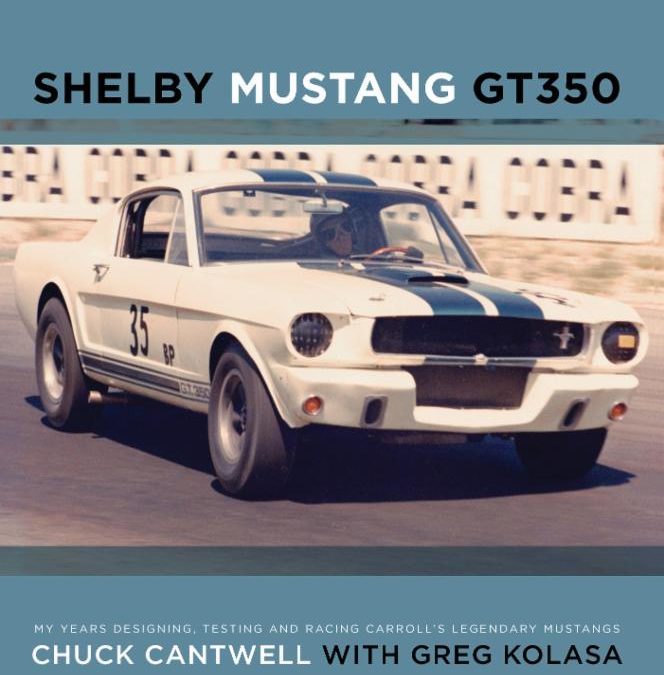
My Years Designing, Testing and Racing Carroll’s Legendary Mustangs
When the Ford Motor Company needed a new car aimed at the youth market of the 1960s, it created the instantly-popular Mustang. When it decided to turn the Mustang into a true sports car it turned to Carroll Shelby. And when Shelby needed an engineer to develop what would become the classic Mustang GT350 he hired Chuck Cantwell.
In Shelby Mustang GT350: My Years Designing, Testing And Racing Carroll’s Legendary Mustangs Cantwell delivers a unique first-hand account of his years at the Shelby American company. Working alongside Shelby and a dedicated team, he succeeded in producing a car that was an immediate success on the race track and an iconic muscle car whose reputation remains unmatched after more than half a century.
When Shelby hired Chuck from General Motors, he got more than an experienced project engineer. He also got an accomplished driver, a three-time SCCA Division class champion in cars that he prepared himself. That background helped Chuck engineer solutions for the Mustang and accurately evaluate them, even in competition. The Shelby GT350 won the SCCA’s B- Production National Championship three years in a row, and Ford won two consecutive Trans-Am Manufacturers Championships in Mustangs prepared and campaigned by Shelby American.
On a subject as popular as the Shelby Mustang GT350 fresh, definitive information is hard to come by, but that is exactly what Chuck provides. He shares fresh technical details, never-before-heard anecdotes, and corrects popular misconceptions about the GT350’s origins and development. Chuck also covers his work on later cars like the GT500, as well as his critical role with the Shelby racing team in the Trans-Am series. And his month-by-month narrative is supported by scores of photographs (including many rare images from his own collection and those of other Shelby insiders) as well as technical drawings and company memos. Additional background information, data, and details are provided by co-author Greg Kolasa, an automotive historian who has spent decades researching and writing about Carroll Shelby’s cars.
Shelby Mustang GT350 is a vivid, fact-filled account of how the man Carroll Shelby dubbed “Mr. GT350” led the effort to create an American automotive legend. It’s precisely the book that Shelby Mustang owners and other enthusiasts have been waiting for.
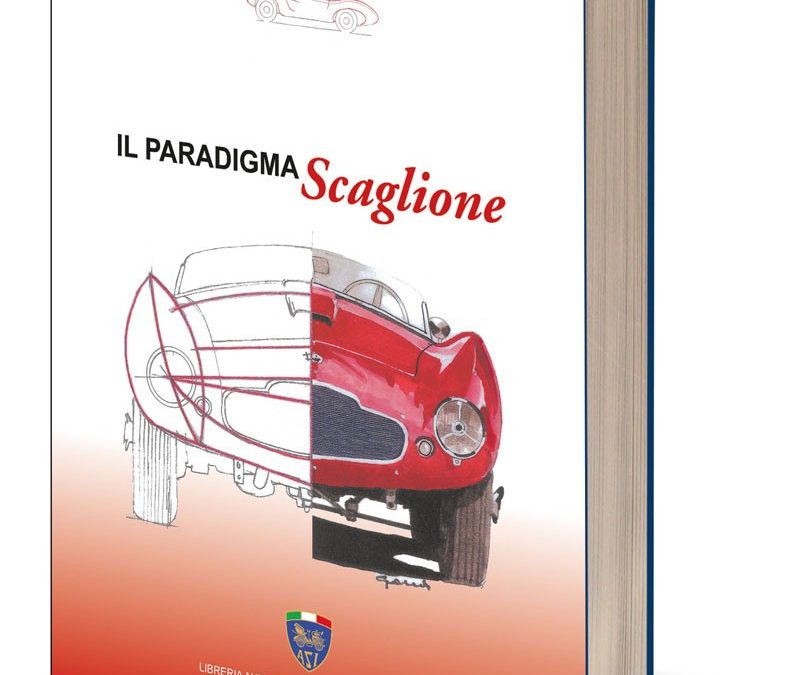
This book seeks to grasp the sense and evolution of Franco Scaglione’s design a hundred years after his birth. Through the analysis of his most significant projects and some of his writings it investigates the complex, sometimes contradictory spirit of his his research, his aerodynamic applications and his role in establishing the leadership of Italian design in the car world. This book traces the history of his work: from the beginnings, through the collaboration with Bertone, the period as a freelancer, finally to end with the unfortunate experience with Frank Reisner Intermeccanica .
151 pages of drawings and photos spanning his entire career.
Itaian text

This book covers all uniforms issued and worn by the Marshal of the Soviet Union, Marshals, Generals and all field rank officers from 1955 to 1991. It features a well researched and illustrated history of each type of uniform, the period it was approved for and how it was made. However, this book is not just about describing and showing pictures of Soviet officers’ uniforms. It contains a comprehensive collector’s and buyer’s guide, designed primarily to help enthusiasts identify what they might wish to purchase. It provides anecdotes of the author’s purchasing experiences, including the various traps awaiting the inexperienced uniform collectors. Its contents will help any student of the Soviet military identify uniforms properly, and hopefully distinguish an original from a reproduction.
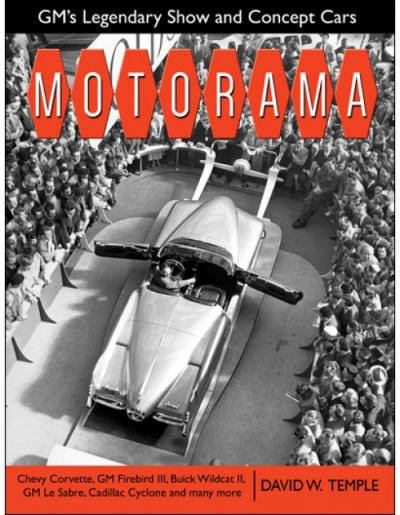
In an age of unbridled American enthusiasm and towering industrial might, the GM Motorama was a dazzling and elegant show that was unlike any automotive event before it or since. General Motors staged extravagant and elaborate Motorama shows that rivaled some fashion shows. It showcased some of the most revolutionary and innovative prototype and dream cars ever built. And it captured the imagination of the car-buying public from 1950 to 1961.
Motorama expert and experienced author David Temple has comprehensively researched the show, the cars, and the personalities to create a fascinating new story with many new photos of these magnificent cars. Because television was in its infancy, GM’s President Alfred Sloan believed that the Motorama was the most effective way to market GM products and design prowess. Legendary stylist Harley Earl led a talented group of designers and engineers to dream up, style, and develop some of the most remarkable prototype cars of all time. While current production Buick, Chevy, Cadillac, and Pontiac cars were showcased, the bold, radical, awe-inspiring prototype and dream cars stole the show. These included the GM Le Sabre, replete with aerospace design and an aluminum engine; the fiberglass-bodied Corvette dream car, which went into production after overwhelmingly positive response; and the jet engine-powered Firebird. Temple goes into fascinating detail on the body, frame, engine, drivetrain, and all the special features of each model. He has also retraced the ownership histories of some of these cars.
Within the pages of this volume, you get to relive this glorious era of automotive history and revisit the advanced show cars that inspired so many new models. This book features fascinating period photography of Motorama cars at the show, in development, and at different locales. No other automotive show rivaled the Motorama for stunning productions and awe-inspiring cars, which makes this a must-have book.
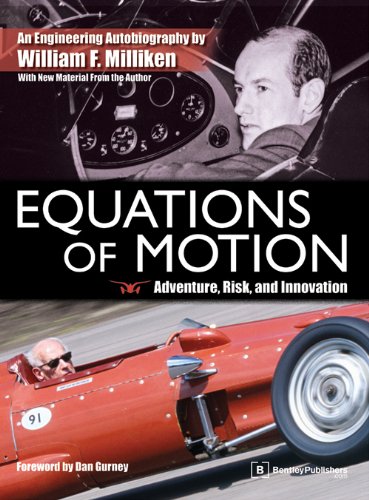
William F. Milliken’s handling research is fundamental to modern automobile design, and his definitive books on vehicle dynamics provide engineers and racers with practical understanding of chassis design for maximum performance. Equations of Motion is the story of Milliken’s lifetime of experimentation and innovation in vehicle stability and control.
In Equations of Motion: Adventure, Risk and Innovation, Milliken vividly recounts his experiences pushing airplanes and race cars beyond their limits. His exciting life provides singular, real-world insight into the challenge and joy of engineering and the history of vehicle dynamics as he created it in the air and on the track.
Bill Milliken’s acclaimed engineering autobiography is now available as a lower-priced paperback containing new material written exclusively for this edition.












